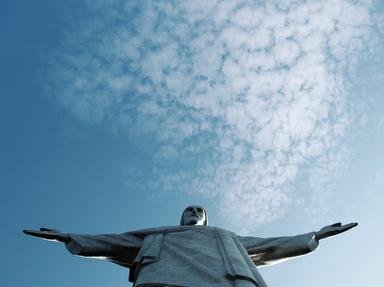Quiz Answer Key and Fun Facts
1. From which of these European countries did Brazil become independent on September 7th, 1822?
2. Who was it that, according to tradition, declared Brazilian independence upon a neighing white steed?
3. On April 7th 1831, with his popularity suffering badly from the economic crisis caused by the Cisplatine War, foreign debt and the bankruptcy of the Banco do Brasil, Dom Pedro I abdicated in favor of his son, Dom Pedro II. What then happened?
4. One of the many regional revolts that took place during the 1830s was the Farroupilha, in the extreme south of the country. A man who would, many years later, be instrumental in the unification of a European country played an active role in this revolt. Who was he?
5. During the Brazilian Empire period, which of these was the most important crop, and the source of immense political clout and economic power for a small agricultural elite?
6. Slave labor was traditionally used for the cultivation of coffee during the Brazilian Empire. However, after the prohibition of slave trade (but not slave labor) planters brought in enormous contingents of European immigrants to work the fields. These 19th century immigrants helped forge modern Brazilian culture and their descendents represent a large portion of the population today. Which were the most numerous groups?
7. The Paraguay War (1864-1870) is, to this day, the war in which Brazil has had the most casualties. It was fought by Brazil, Uruguay and Argentina against Paraguay, with the objective of frustrating Paraguayan dictator Solano López's expansionist ambitions. What was the main objective of the dictator's agressive policy?
8. To pay for the expansion and equipment of their armies for the Paraguayan War the belligerent states contracted heavy debts with foreign banks. To which of these nations did the Brazilian Empire owe the most?
9. Sadly, Brazil was one of the last nations in the Americas to abolish slavery, on 13th May 1888. What is the name by which the abolition decree was known as?
10. The Brazilian Empire fell ,without any bloodshed, in 1889, and the Emperor Dom Pedro II was forced to leave the country. Many groups and often conflicting aims lay behind the proclamation of the Republic. Some of them are listed below. Which of these immediately followed (if temporarily) the end of the Empire?
Source: Author
pedro3335
This quiz was reviewed by FunTrivia editor
bloomsby before going online.
Any errors found in FunTrivia content are routinely corrected through our feedback system.

